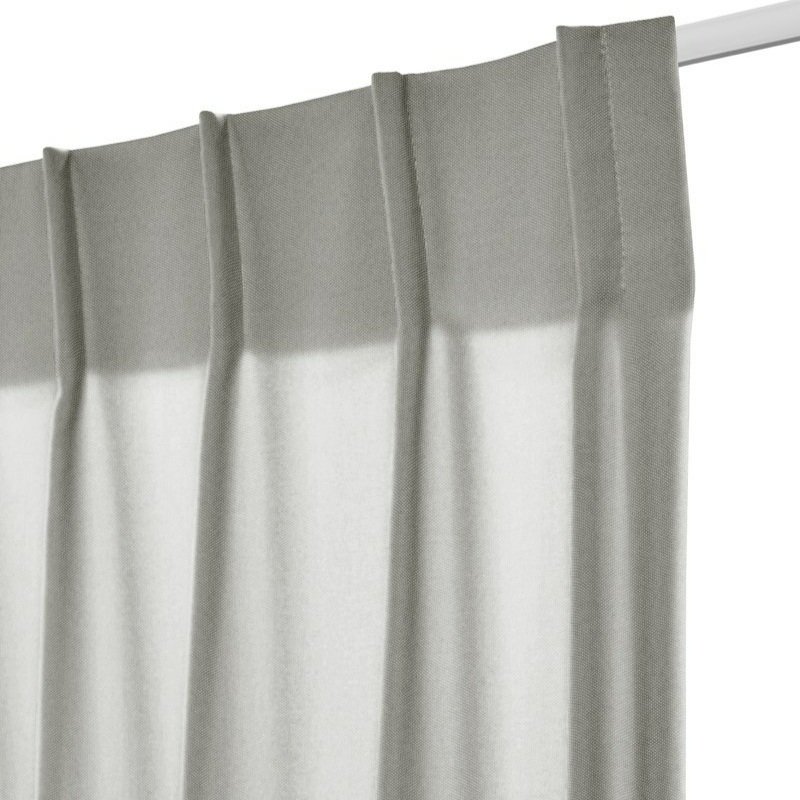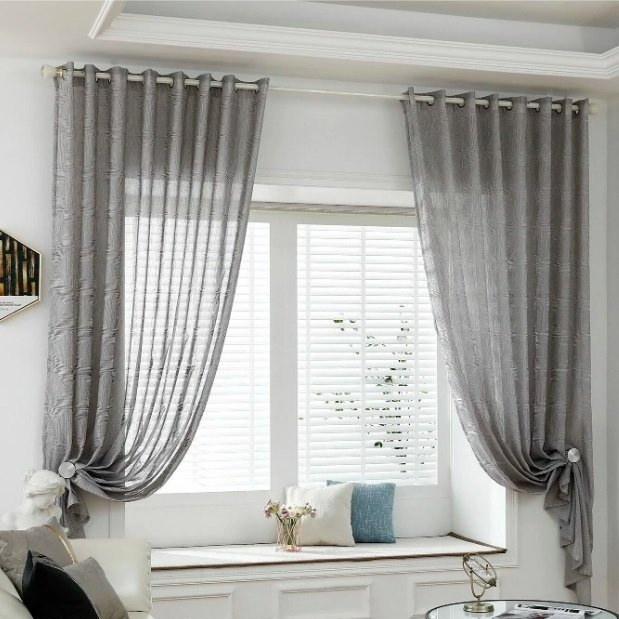France or Manhattan? Where are your curtains taking you?
Recently I’ve been going over curtain options with a couple of clients and have quickly come to realize just how confusing all of the pleat chat is! Firstly most pleats have multiple names for the same thing which just adds to the general confusion. Secondly, if you’re not emersed in this world it’s like speaking a different language, and hard to grasp what the differences mean for the overall look, so I’m here to break it down and give you a simple guide.
Just remember however, rules are made to be broken, none of this is set in stone. My philosophy for homes is if you love it then it doesn’t matter what anyone else thinks. But if you’re at a complete loss and just feeling overwhelmed with the choices available here is what you need to know about the different styles and the homes they generally suit.
pencil Pleat
This is the most common of all the pleat styles. It is what you’ll be accustomed to from most ready-made curtains. They are versatile and can be used in any home, however if you’re investing in custom made drapery for your home I recommend staying away from this style. They’re commonly used because they suit most fabric types but it will look like you grabbed them at Spotlight. I’m not saying there is anything wrong with ready-made curtains, I personally have bought my fare share of them over the years! But when you’re spending the money to get custom curtains for your home you want it to show, and the pencil pleat style will take away from this. I personally find the gathered top quite messy looking and prefer other styles.
2. Pinch pleat
Single Pinch Pleat
Dutch/Double Pleat
French/Triple Pleat
Single Pleat: This is one of the most economical options as it uses less fabric than some of the other pleat styles. While it has a more modern vibe than the other pinch pleat styles its simple elegance means it’s versatile enough to use in any home. The pinch ensures you get some volume to your drapery while still keeping an unfussy look up top. This is a very flexible, timeless style and in my opinion the most versatile of the pleats available.
Dutch or Double Pleat: The double pleat brings slightly more fullness to the curtain and has a more traditional vibe than the single pleat. It’s a tailored look that can suit an older home as it brings an element of formality. The double pinch folds back beautifully ensuring the drapes look good both open and closed, a nice and tidy look for those who lean towards a traditional look.
French or Triple Pleat: This is one of the most traditional and elegant of the pleat styles available. It will create a more voluminous full curtain that will drape beautifully. Due to the amount of fabric required it will be a more expensive option so keep this in mind when thinking about your budget and what is best for your home. It is an elegant and timeless look that would suit someone who is trying to achieve a more formal feel for their space.
3. Manhattan/Inverted/Box Pleat
Manhattan or Inverted Pleat
Manhattan or Inverted Pleat - Drapes and Blinds Direct
This is an incredibly popular option for curtain pleats and it’s not hard to see why. The inverted style (the pleat is hidden at the back) gives a contemporary, sleek finish and is perfect for a modern home. The flat finish when closed make this pleat the right fit for anyone who leans towards minimalism. I also recommend this style for people who gravitate towards mid-century modern as the pared back look is the perfect fit for this aesthetic. They are a great option for many fabric types and weights but I particularly like them for sheers that are intended to remain pulled across as it creates beautiful clean lines.
4. Eyelet pleat
Eyelet curtains have metal rings evenly interspersed along the top of the fabric that then enables the curtain to hang without hooks directly on the curtain rail itself. This is another common style you’ll find in ready-made curtains and are a great for those who want a simple solution to their window dressing needs. Because of the even placement of the eyelets the curtains have soft loose folds and stack back nicely (though personally I find they can easily catch on the rail which can be frustrating). These have a more modern, casual aesthetic, but in general are versatile enough to suit most homes.
5. Wave/accordion/s pleat
Wave pleat curtains are the grown-up sister to the eyelet. Hung on its own special track the wave curtain creates the same look as the eyelet without the downside of the curtain getting stuck on the rail. This creates a very uniform look curtain in a distinct ‘s’ shape, similar to the eyelet. However, since it can’t ever hang unevenly as the S is fixed it is more sophisticated than its casual counterpart with its rings. Not as sleek and minimalist as the Manhattan this look is suitable for someone who favours the consistency of the fold repeat and the refinement over the eyelet. If you’re looking to replace existing curtains with wave pleat bear in mind you’ll need to replace the track too as they are a difference system which can add to the overall expense.
6. Tab top curtains
This is by far the most relaxed of all of the curtain styles and are perfect for those who lean bohemian or want to create an informal vibe in their space. These are a great choice if you’re looking to DIY your own window treatments but sewing skills aren’t up to the complicated pleats above. It’s also an easy way to add length to existing curtains if you’re after that scrumptious puddle (excess fabric) on the floor. Tab top curtains can also be found as ready-mades and are one of the most affordable options when it comes to dressing your windows. Keep in mind that the fabric can catch making opening and closing them tricky.
7. Hidden
Ok so this isn’t a pleat style, but if you’re looking to avoid the headache of choosing a style a great solution is not seeing the top of the curtain at all! This is something that needs to be thought about in the planning stages of your build or reno. In my experience people often don’t even think about curtains until much further down the track as the sheer (no pun intended) number of decisions that need to be made around your project, room size, plumbing placement, all the structural stuff. By the time you get to window treatments they tend be an afterthought, or something that doesn’t demand attention until the home straight. The devil really is in the detail in this case, so if you love this look, make note so that when it comes time to be planning your dream project this is one of the specifications you make early on. It’s the perfect solution for a modern, pared back minimalist style.
I like to think of curtains as the eyebrows of your room. They frame windows like your eyebrows frame your face. You don’t want them too big and bushy, too narrow, or not to suit you - the same goes for your curtains, they need to fit the room they’re in. they’re not the first thing people see but if they’re not right people will notice.
Hopefully you’ve found this wee guide helpful and will feel more confident going in when you next need to sort curtains for a space, even though I haven’t managed to get to fabric or rods yet… Just keep in mind your personal style and the style of the home you’re in and I’m sure your window dressing dreams will become a reality. I’d love to hear your favourite pleat, comment below or on my Insta!















